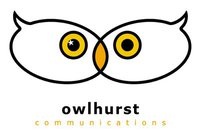
Driverless Cars: The Death Knell for Roadside Billboards?
Craig Wallis, Business Unit Director at The MediaShop
I was recently provided with an interesting report by the US law firm, Venable LLP, entitled “The Future of OOH in a Self-Driving America“.
Being in the OOH industry, I thought it would make for an interesting read, and it has! I’ve taken the liberty of including a few excerpts from the report to summarise its findings:
In the US, 94% of vehicle crashes can be attributed to a human choice error. This has resulted in many motor manufacturers installing crash avoidance technologies and now we even have trials being conducted with driverless/fully automated vehicles (“AVs”).
In addition to safety advancements, AVs are poised to change the way consumers and businesses experience mobility and transportation. All vehicle occupants will be free to engage with stimuli both in and outside the vehicle. Some research indicates that this increased efficiency could reduce the time consumers spend in traffic.
Other research shows that AVs may increase time spent in vehicles as ‘drivers’ or passengers find longer commutes more tolerable, convenient, and more consumers may choose to use AVs over non-automotive transportation options. As AVs are able to drop off or pick up passengers on demand at precise locations, this efficiency and convenience could result in increased ridership of public transportation.
AVs can provide tremendous opportunities for communities with limited mobility options, such as those facing low income earnings, aging populations, or people with disabilities that are currently prevented from operating a motor vehicle.
So what does this disruptive technology mean to the OOH Industry?
Since drivers will no longer be focused on managing the multiple tasks needed while operating a vehicle, some commentators believe that AVs could allow a driver to engage more fully with their surrounding environments. Other researchers theorise that occupants would carry out more activities, such as work, conversation, using mobile devices, reading or watching videos. These activities will allow OOH and mobile app advertisers to co-ordinate messages across digital billboards and smart phone screens.
There is an opportunity here for OOH providers to leverage existing assets and technology to deliver an improved advertising experience, wireless connectivity, and public service messaging. In Los Angeles, companies are partnering with the city to offer “smart benches” across the city. These benches represent new opportunities for the OOH advertising industry in that they provide pedestrians and public transit users with Wi-Fi and mobile device charging stations, and the opportunity to interact with advertising on the benches.
Built-in displays in public transportation vehicles could provide OOH companies with access across public transport fleets, allowing more engaging, dynamic, and relevant advertising to find consumers in new ways.
The IEEE predicts that by 2040, 75% of all cars on the road in the US will be AVs. That is just 23 years away. So, until a significant number of AVs are on the road, drivers will continue to focus on the road (and on OOH) in much the same way they are doing today.
So it’s business as usual… for now. But what happens in 30 years time and how will our SA out of home media owners secure their existence and relevance over the next two decades?

 “I’m really excited to get stuck into my new role within the IAB where I’ve been a member for the past two years,” he says. “My duties will be to drive the agendas of the publisher members, with special focus in the areas of fake news and upholding journalist standards; cross platform publishing; developing an entry strategy for publishers within the Bookmark awards; brand safety for advertisers on IAB member sites and driving publisher involvement in improving overall measurement.”
“I’m really excited to get stuck into my new role within the IAB where I’ve been a member for the past two years,” he says. “My duties will be to drive the agendas of the publisher members, with special focus in the areas of fake news and upholding journalist standards; cross platform publishing; developing an entry strategy for publishers within the Bookmark awards; brand safety for advertisers on IAB member sites and driving publisher involvement in improving overall measurement.”






